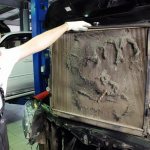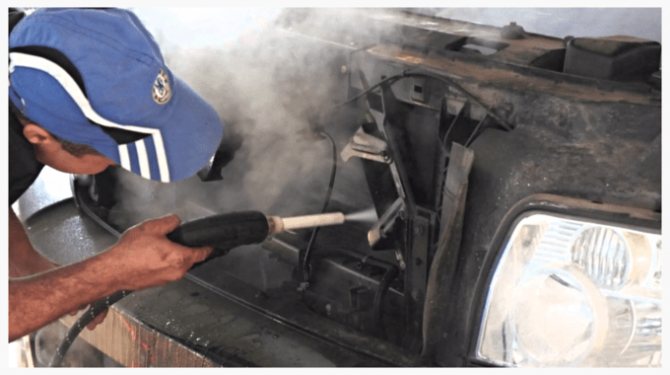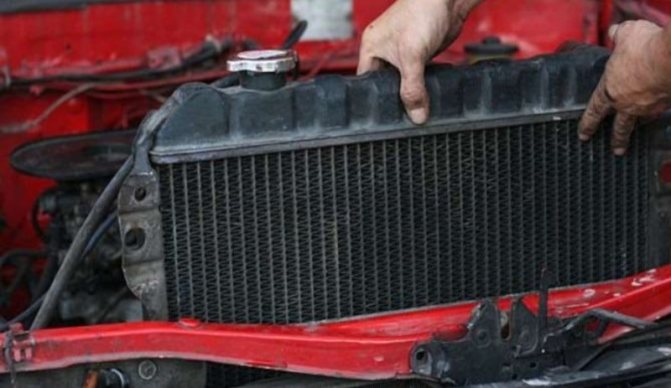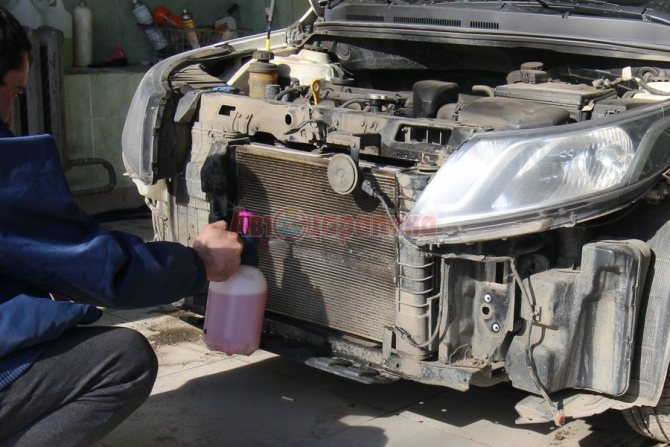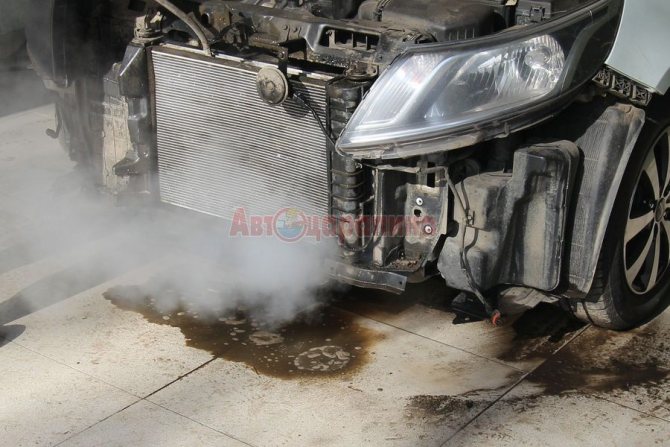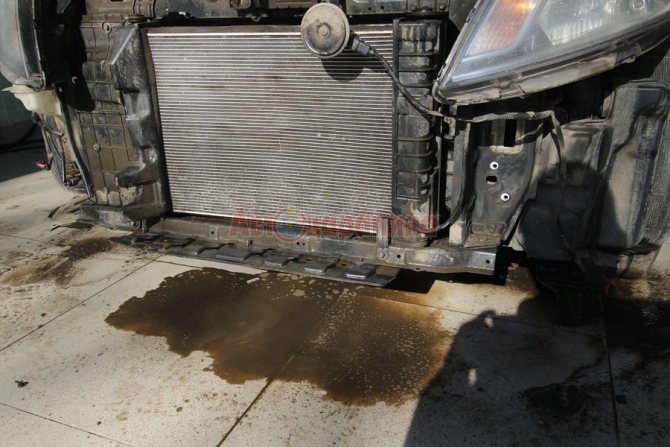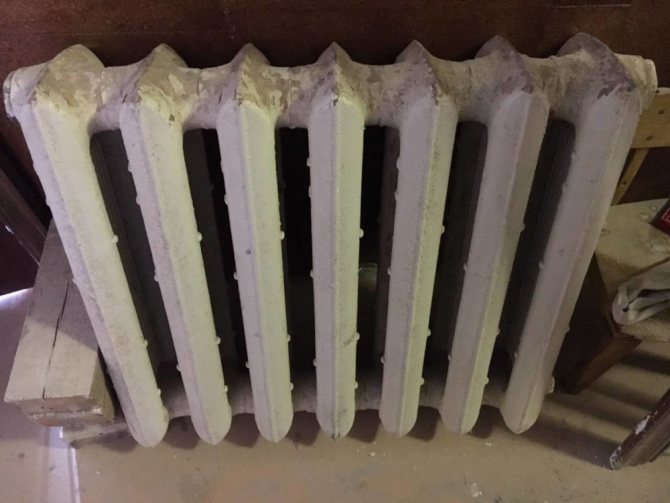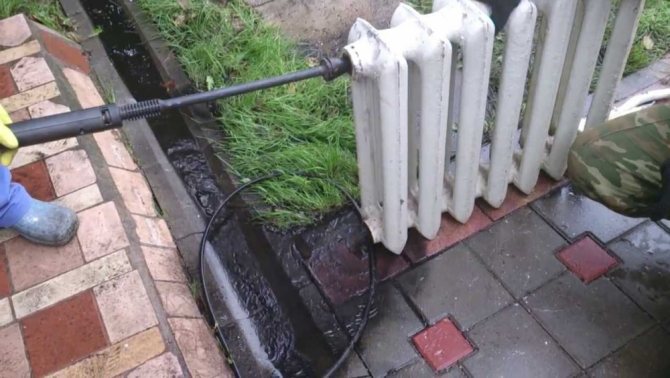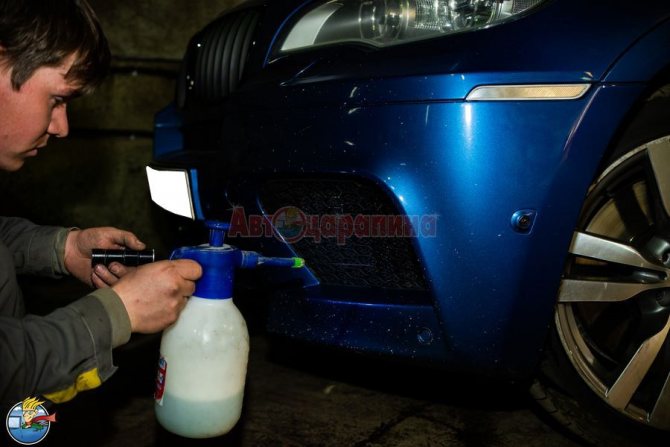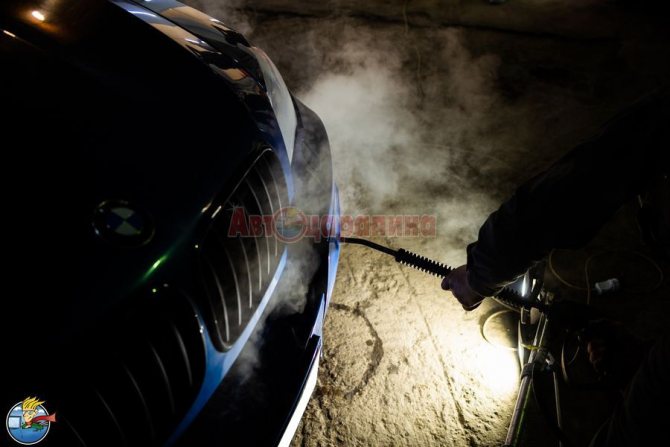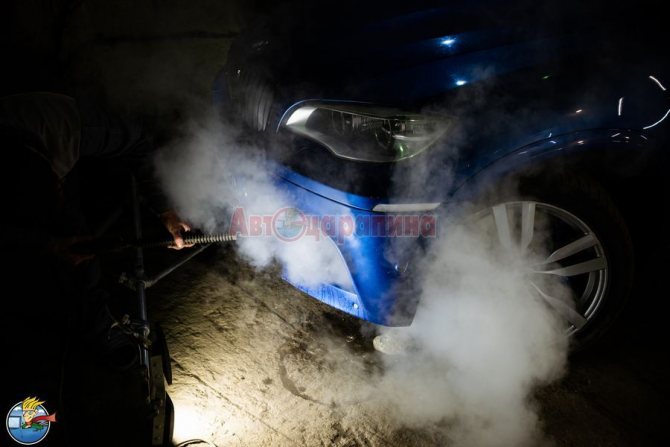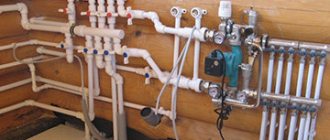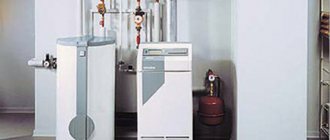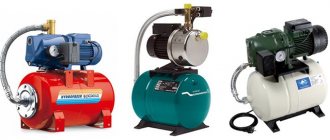Hello dear readers and have visited the blog Avtoguid.ru. In the article, you can find out how to flush a car's radiator with your own hands without outside help. It belongs to the operations of caring for the machine and does not require the use of special equipment. All actions can be performed at home. You do not need to have specific knowledge, enough desire and a little free time.
It is better to flush the car radiator on the weekend when you have free time. Haste in this case is a bad helper, because the quality of the work performed will suffer. Often, if it is necessary to repair the radiator in case of damage, then flushing is simply not enough. This is one of the most important steps in the preparatory process. After carefully reading the article, it will be possible to perform all flushing operations promptly and without loss of quality.
Do-it-yourself car radiator rinsing
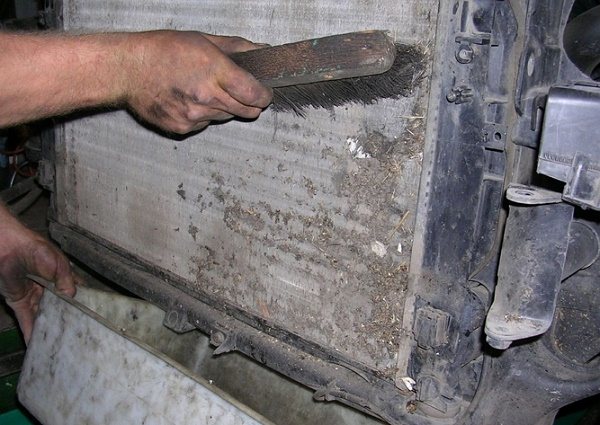
Contamination of the radiator is not only dangerous due to overheating of the motor. Numerous foreign elements on its surface can become a catalyst for a corrosive process. It gradually begins to break down the material of the radiator, thereby causing the coolant to leak.
That is why it is very important to do the washing of the car radiator with your own hands in a timely and efficient manner. Experts recommend cleaning the inside and outside of the radiator at least once a year. This is the optimal period of time for servicing it and maintaining maximum performance.
There are 2 ways to flush a car radiator:
Internal flushing.
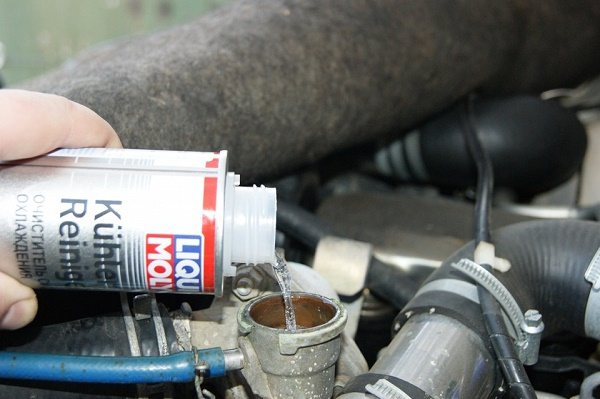

The inside of the radiator is cleaned from dirt. Special means are used to remove scale and foreign elements inside the radiator.
The order of performing the actions is as follows:
- the car engine must be turned off;
- open the hood of the car and wait for the engine to cool;
- drain the coolant from the system (the drain hole is located at the bottom of the radiator);
- pour distilled liquid into the system (as a rule, 5-7 liters are enough, depending on the car model);
- start the car engine and let it run for about 20 minutes;
- drain and refill with distilled liquid;
- repeat the operation at least 3 times.
It is imperative to add a radiator cleaner to the distilled liquid poured into the cooling system. Washing efficiency increases several times. The dosage of the chemical will be listed on the instructions. It must be observed to prevent damage to the cooling system.
Internal flushing the car radiator with your own hands allows you to clean the system from slag, scale, rust and antifreeze sediment. The permeability of the pipes of the cooling system is improved and the circulation of antifreeze is enhanced. The special composition of the cleaning agent is harmless to plastic, rubber and metal elements.
After using the cleaning agent, experts recommend performing a control flush of the system. Ordinary pure distilled water is used. Often, residues of the cleaning agent provoked corrosion inside the car's radiator. After cleaning the internal elements of the radiator, you can proceed to the next step.
External flushing of the car radiator.
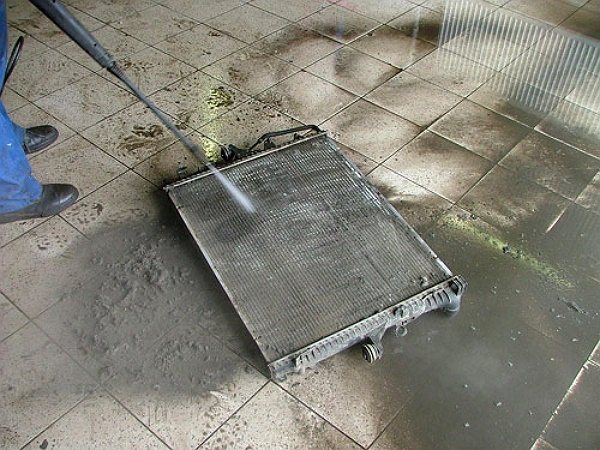

Clearing dirt outside the radiator can increase the cooling efficiency of the motor by 20-30 percent.If in spring, winter and autumn the urgency of cleaning the radiator is not very high, then in the summer all problems begin to creep out.
It is necessary to start the second stage of cleaning the radiator from contamination after the end of the first stage of the work.
It can be divided into the following components:
- dismantling the front bumper of the car (in some car models it is impossible to remove the radiator without dismantling the bumper);
- dismantling of an automobile radiator;
- the main task is to remove adhered debris from its surface;
- a minisink is used (Körcher type);
- a jet of water under pressure removes dust, dirt and insects from the surface of the radiator.
A convenient and quick way to tidy up your radiator. If you don't have a mini-sink at hand, you can use an ordinary rubber hose.
The most important thing is not to overdo it with water pressure in order not to deform the radiator fins. After completing the water procedures, it is necessary to dry the car's radiator in a natural way. Only after making sure that there is no residual water can it be mounted in place.
The radiator is installed in its original place. For greater confidence, experts recommend changing the system hoses. Especially if the radiator has not been previously cleaned. After installing it in place, you can fill the system with antifreeze. It is imperative to run the engine for 20-30 minutes and check the performance of the radiator and the system. This completes the washing of the machine's radiator.
Signs of radiator contamination
An unsatisfactory quality of the heating medium (for example, excessive water hardness) leads to problems in the operation of the heating system.
There are five signs of contamination:
- One radiator gets hotter than the other. If one battery is cooler than the others installed in the room, this indicates that the channels through which the coolant is transported are dirty.
- The battery temperature is lower than the riser. This symptom alone indicates a malfunction of the device.
- The heating of the room has become worse, although everything is in order with the neighbors. If the apartment is cold, this does not always mean that the heating network is not doing its job well. As a rule, the reason is the clogging of communications.
- The bottom of the batteries is cold. If the radiators warm up unevenly, this means that it is time to clean their channels.
- Different section temperatures in one radiator. It happens that the channels are contaminated only in certain sections. Separately, it will not work to clean them, because the entire system needs periodic preventive maintenance.


Car radiator cleaning products
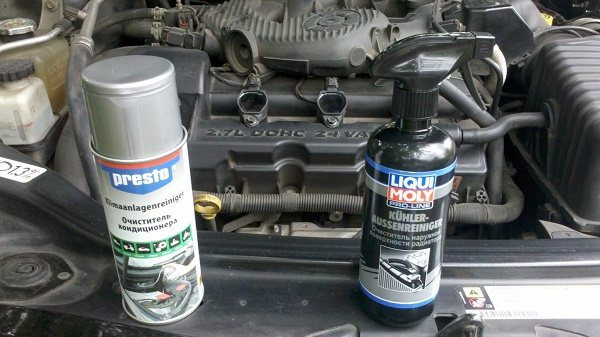

On sale you can find a large number of tools for flushing the car's radiator on your own. Experts recommend choosing products of the middle price range.
The following common means for internal cleaning of the radiator can be distinguished:
1. BARDAHL COOLING SYSTEM FAST FLUSH, cost 6-7 $ US dollars.
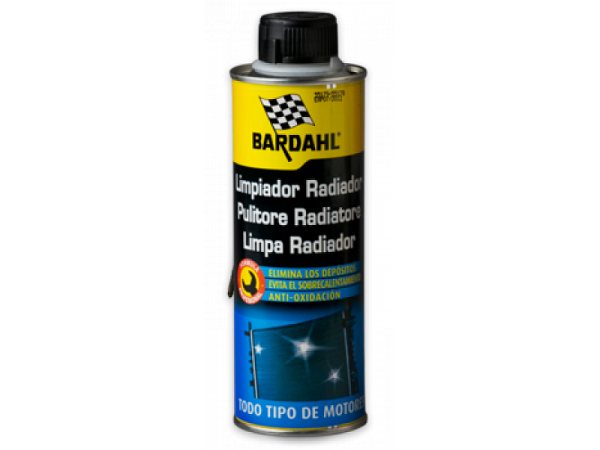

The capacity of the product is 300 ml. One bottle is enough to flush the entire engine cooling system. Perfectly dissolves and removes rust, scale, dirt and scale. Acts very quickly. Cleans the car radiator without having to dismantle it.
Can be used in all types of engines. Completely harmless to rubber, plastic and metal. Due to its low cost, it is popular. Low consumption and high efficiency.
2. Kuhler-Reiniger, cost 10-12 $ US dollars.


The volume of the product is 300ml. All types of dirt inside a car radiator are effectively removed. A popular and modern product that is easy to use. Doesn't require any special skills to use. Chemically decomposes radiator pollutants.
Among other things, it provides protection against corrosion and neutralizes hazardous acids.One bottle of the product is enough to flush the engine cooling system with a volume of 10 liters.
3. Verylube, cost $ 3-5 USD.
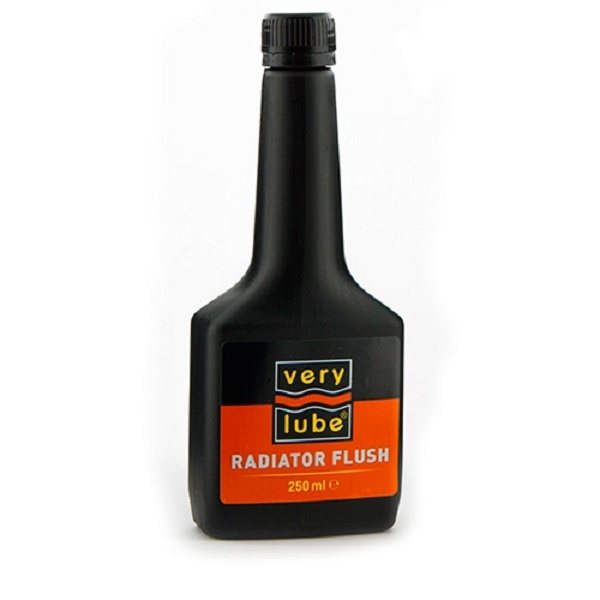

An effective tool for cleaning a car radiator. In a short time, it completely cleans the engine cooling system. Doesn't require any special knowledge to perform work. Convenient and economical packaging. Forms an anti-corrosion film on the inside of the radiator.
Radiator malfunctions
The most common heat exchanger malfunctions are:
- Clogging by rust, scale and other debris inside the core.
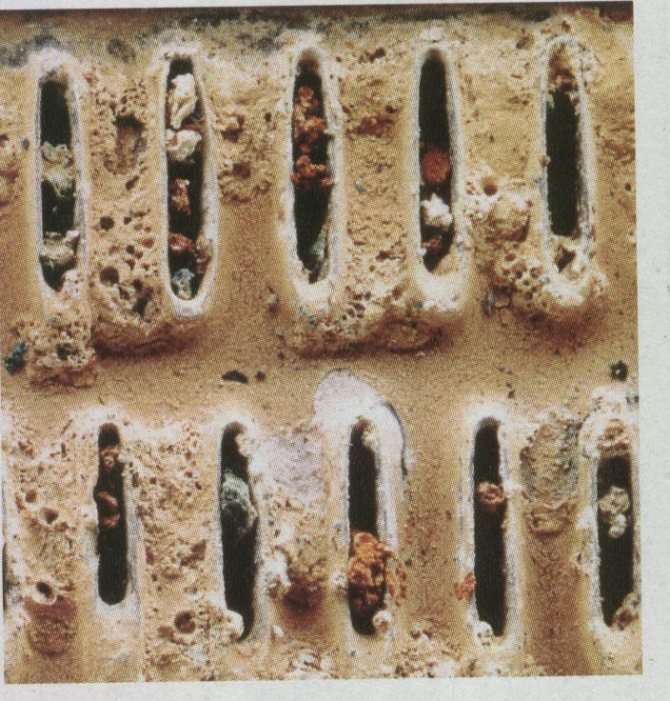

- Dirt on the outside of the honeycomb of the heat exchanger with fluff, etc.


- Debris clogging the duct from the inside in the radiator pipes.
The following factors will tell you about the occurrence of this kind of malfunction:
- Frequent switching on and operation at increased fan speeds, even when driving at high speed.
- Constant jerking of the arrow of the temperature sensor or its readings for an overestimated temperature of the cooling system.
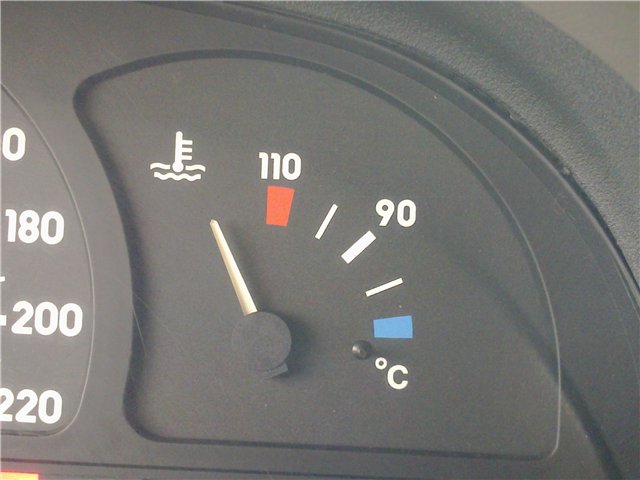

- In the cold period, poor heating of the car interior.
These factors should not be ignored, which can lead to engine overheating, which will be signaled not only by the sensor, but also by the expansion tank cap torn off by steam, but clean the heat exchanger from the inside or outside, depending on the type of contamination.
What is a radiator for?
A radiator is a part of the engine cooling system, in case of overheating of which, you can boil the engine, after which it will receive a major overhaul or a complete replacement, and this is already significant material costs. That is why cleaning the radiator as advised driving instructorsshould be carried out systematically to avoid unnecessary problems.
Cleaning the radiator takes very little time and can be done independently. It is recommended to do such a sink both from the outside and from the inside of the radiator.
When does the cooling radiator need to be flushed?
Clear signs that the cooling system needs cleaning:
- the cooling fan turns on more often, and not only at idle, but also on the move;
- the engine heats up quickly;
- antifreeze is thrown out of the expansion tank when heated;
- the bottom of the radiator and the lower branch pipe are cold, the upper hoses of the cooling system are hot;
- the stove does not heat well in the car;
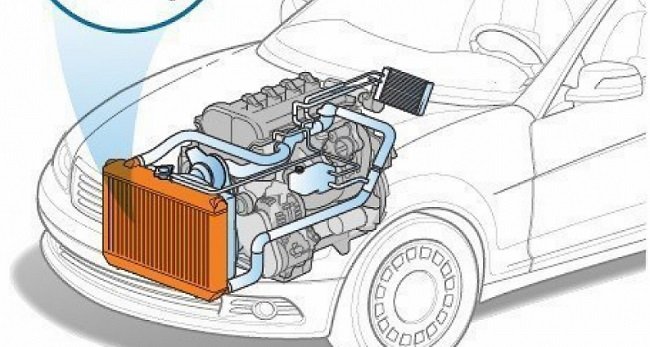

Over time, scale builds up in the cooling system. When draining the coolant from the radiator, pay attention to the content of precipitation, particles and discoloration in it.
A cloudy liquid with particles of an unknown substance indicates that there is probably scale in the system on the walls. Although not always, even a clean liquid indicates a good condition of the radiator from the inside.
A sealant can also get into the coolant, with the help of which small cracks and holes are sealed. Oil can also get here.
Types of cleaning the cooling system
Car cooling system cleaning is divided into interior and exterior work.
Internal work... Internal cleaning consists in eliminating traces of corrosion, residues of engine oil, coolant (antifreeze or antifreeze), as well as the formed scale.
Outdoor work... They are included in the external wash of all components of the cooling system. That is, we wash off dust, dirt, sand, etc. from it. It is also necessary to thoroughly wash the insects adhering to it from the radiator honeycomb.
Means and biologicals for plaque removal
Many people wonder whether it is necessary to first wash the battery outside, or is it better to first clean it from the inside? We advise you to start external cleaning: remove all dust from the radiator, and if it is in the kitchen, then, possibly, a grease film.
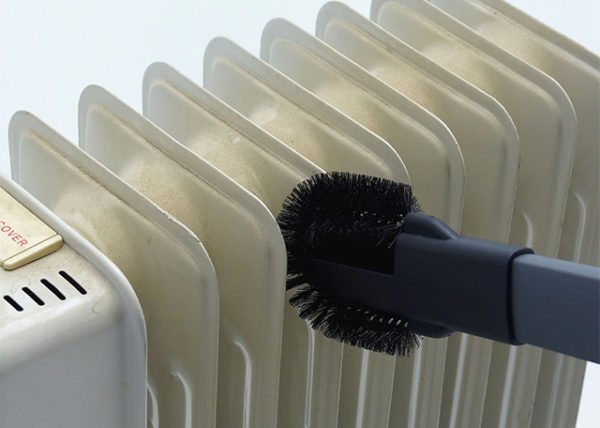

Special brush
After you remove the battery, you need to clean the wall, floor, fasteners from dirt and dust - everything that was hidden from you by the radiator. And after that, with a calm mind, proceed to internal cleansing.
How and how to wash radiators? Of course, when cleaning the radiator, we will not do with water alone. Such substances and solutions will be effective and useful:
- Alkali.
- Means for washing vehicle radiators.
- Lemon acid.
- Caustic soda.
- Acetic acid. Some also use essence (70% solution).
- Milk serum.
- Means for cleaning sewer pipes like "Mole".
Caustic soda Milk whey Car radiator cleaner Essence Citric acid Mole product
Sometimes cleaning is done mechanically, by tapping the outer surface and rinsing with a jet of water under pressure, without using additional cleaning agents. This method is not always effective and can lead to damage.


To facilitate the process, it is better to use flushing chemistry:
- Car radiator cleaners: Hi-Gear, Liqui Moly, Lavr, Pingo. There are other manufacturers, but they are not so highly recommended. Before use, the selected substances must be diluted with water according to the instructions.
- Special formulations with a high degree of biological activity. In everyday life, they are used quite rarely, since it is not easy to choose the right tool for the elements of a system made of different materials. Cleaners of the professional series "Medex" and "Master Boiler Power" cope well with the task. They are completely safe for pipes and heat exchangers made of various types of metals. Compounds of the Dosker Thermo series are most often used for cleaning polymer pipelines. Reagent "Metalin T" is safe for removing heavy lime deposits in heating systems made of steel.
- Household chemicals containing caustic soda. Solutions are excellent at removing dirt, but they may not cope with more stubborn deposits of scale, rust and blockages.
- Acetic essence, whey and citric acid. They are characterized by low cost. Reagents based on them are able to remove a small amount of salts and deposits.
- Concentrated alkali for washing sewer pipes "Krot". It should be used only for cleaning cast-iron batteries, since in aluminum and bimetallic radiators, it can lead to destruction of the inner surface.
